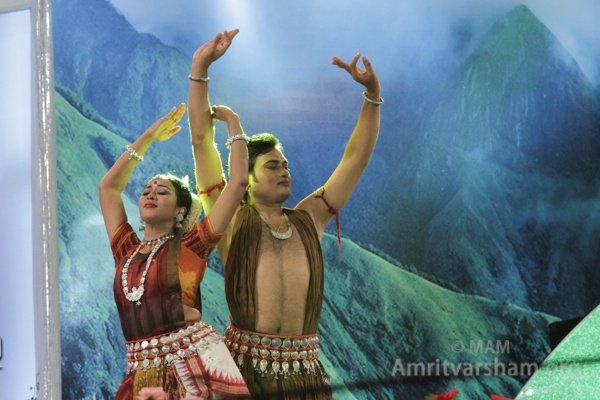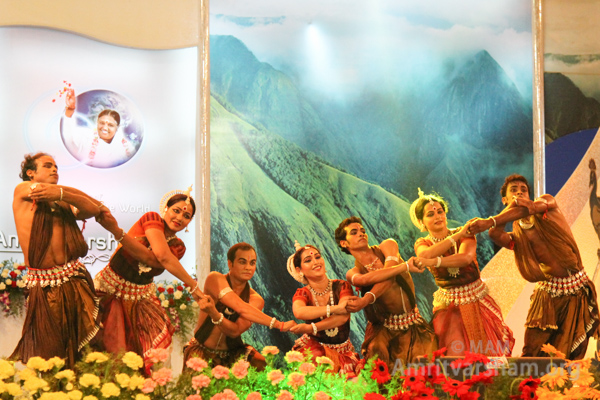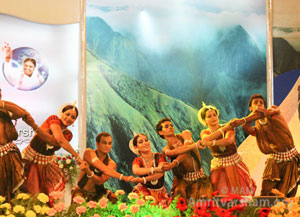26 Sep 2013, Amritapuri – Amritavarsham 60
Amritapuri on Amritavarsham 60 is fortunate to experience the traditional dance forms of Odisha, the day witnessed yet another splendid performance by an established Odissi dancer Aruna Mohanty and her group. The divine mood set by the Bhajans (by Amma) was continued with this spectacular performance. The graceful dance moves synchronized perfectly were a feast to the eyes.

Odissi dance originated in the temples of Odisha, India, more than 2000 years ago. The dance Odissi is graceful, expressive and sophisticated.
Vitality, charm and amazing talent makes Smt. Aruna Mohanty one of the finest dancers in the field of Odissi. Her perception of dance and choreography is unconventional.

Expression, or rasa, the basis of art was portrayed by the performers to reach out to Amma’s children. Through movements and music, the performers enhanced the spiritual ambience . The artists enacted eight rasas based on the epic Ramayana. The rasas enacted and their symbolic significance are as follows:
In sringara rasa or love, hand gestures and facial expressions are portrayed by Rama and Sita sharing in the joys of being together. As Rama breaks Shiva’s bow to win the hand of Sita, he becomes the embodiment of veera rasa or chivalry. When the demoness Surpanakha is sent back and forth between Lakshmana and Rama, hasya rasa or humor and laughter, is evoked. The whole forest of Panchavati is filled with fearful sounds as Sita is abducted by Ravana. The mood is one of bhayaanaka or fear. When Rama sees his friend and devotee, Jatayu, dying in his hands, he is full of karuna rasa or compassion. Rama is full of wonderment, adbhuta rasa as the army of monkeys builds the bridge the Setu Bandha, the bridge that connects to Ravan’s Lanka. Seeing the battlefield strewn with dead and maimed bodies makes one full of bibhatsa rasa or disgust. Rama confronts Ravana in the battlefield exhibiting Raudra rasa or wrath.
Odissi is truly a celebration – graceful, well coordinated movements offered joyously as an offering to the Divine. The performance was indeed a prayer to the Divine Mother.
– Sreerag Rajan & Rahul Raj

